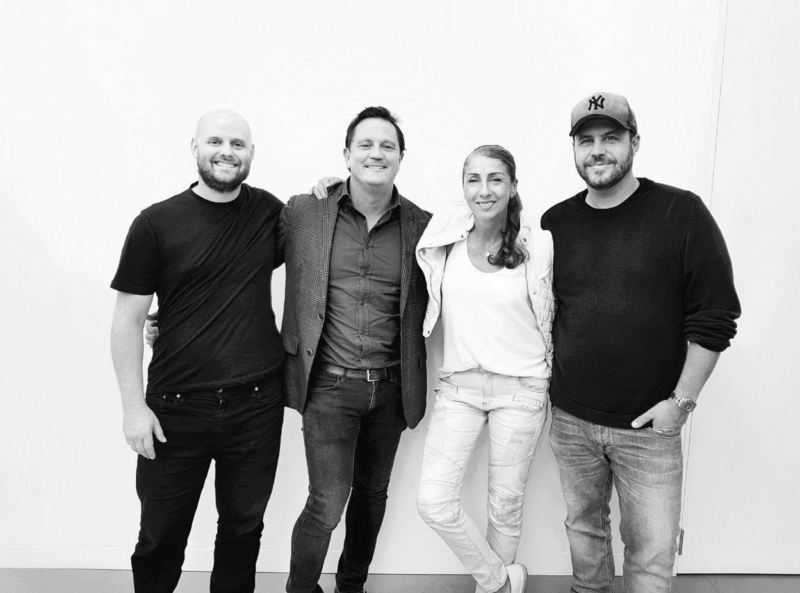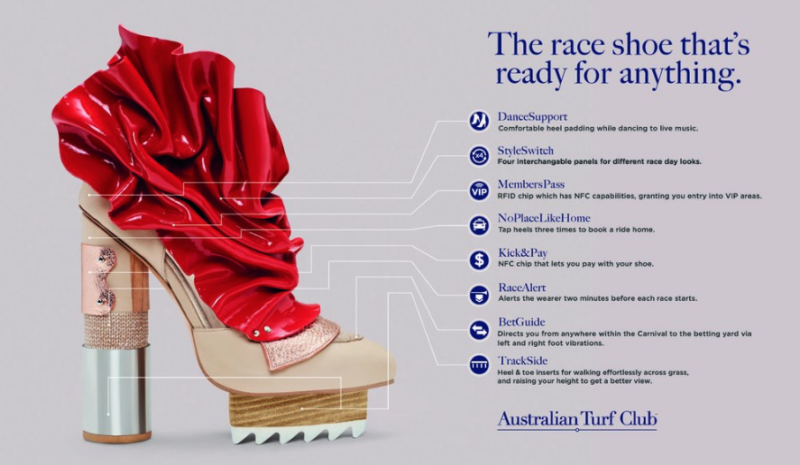‘PR isn’t an afterthought’: TBWA’s new agency approach
As agencies’ boundaries continue to blur, Mumbrella’s Abigail Dawson speaks to TBWA Sydney’s new leadership team on how they successfully melded creative, strategy and PR into one cohesive offering.
TBWA Sydney has been implementing a new integrated agency model where creative, strategy and public relations have been consolidated to work as one department, with TBWA Sydney’s managing director Nitsa Lotus arguing public relations is no longer an afterthought.
Lotus says the group’s PR brands Eleven and FleishmanHillard, and TBWA’s creative department has been consolidated to “one creative department” with PR being involved in creative pitches from the initial brief.

Matt Springate: chief strategy officer, Paul Bradbury: chief executive officer, Nitsa Lotus: managing director, Andy DiLallo: chief creative officer
“It’s forced us to be better storytellers in an age where media is so fragmented.
“They’ve got to do way more with a lot less funds. Earned media should be part of a media plan. It should be part of the planning, and that’s why PR isn’t an afterthought, it’s at the very heart of the idea, so that they are sharable,” Lotus says speaking to Mumbrella.
Amalgamating Eleven PR, FleishmanHillard and TBWA’s creative teams hasn’t been the only integration the agency has seen; with the agency merging both its creative and strategy arms following the appointment of chief creative officer Andy DiLallo and chief strategy officer Matt Springate.
“Strategy’s amazing, but without the right creative, it’s irrelevant. And great creative without great strategy is just noise.
“Essentially, what we’ve done is we’ve moved it so each of those pods is set up so you have a senior creative team at a creative director level, you’ve got a junior creative team or mid-level team that reports into them, and you have a senior strategist who’s sitting with them and a junior strategist, and they’re really working iteratively throughout the entire process.
“Instead of it being really separated in different parts of the agency, it’s now actually linked, and it’s working at one pace,” DiLallo says.
Paul Bradbury, CEO at TBWA Sydney, tells Mumbrella the new model has been six years in the making and was strengthened up when DiLallo was appointed in February and Springate was brought in from Grey in London in April.
“It hasn’t been easy to make it work. It’s been a model we’ve had under construction for about five or six years.
“We started a consumer PR division (Eleven PR), and at first they were quite separate and when we finished any credit work we’d go to the guys at Eleven PR, and say, ‘would you please go and PR that idea?’ And they’d go, ‘we’d honestly rather write about your creative idea’,” Bradbury adds.
The CEO of TBWA Sydney says the agency learnt over time its PR department needed to be sitting in the creative room with the creatives and strategists to make sure ideas were relevant and suited to bigger stories.
“When Eleven grew its scale and won the Mcdonald’s business, we could’ve separated the two. Instead, we very much kept them together.” the CEO said.
Providing an example, the executive team drew on a campaign created for the Australian Turf Club which was a PR-led strategy to engage media with an interesting idea and created a wearable tech shoe.
Another collaborative campaign by both the creative and PR agency is M.J. Bale’s ‘coolest suit on the planet’ by following UK weatherman Alex Beresford to the hottest places on Earth.
In its most recent collaboration, TBWA and Eleven turned one of the “most actively haunted sites in the country”, Manly Quarantine Station, into a holiday house and invited a couple to stay overnight to show the power of its lights.
Leading the creative charge for TBWA Sydney was a defining career moment for the chief creative officer, saying when he left M&C Saatchi as its chief creative officer in November last year he questioned the future of his career in advertising.
“I left the industry for several months and had this breather, where I was like, do I even want to be in advertising? That was a real question, did I even really want to be in this industry anymore? And it wasn’t until I met Paul, and Matt I re-found that love and found people who shared that vision, and spoke the same language.”
DiLallo said it was what attracted him to TBWA, labelling it as the “biggest, freshest, open way of working”.
“It’s been nothing but exciting. There hasn’t really been a downside to it,” the creative says discussing his entrance into the new role at TBWA in February.
For Springate, joining TBWA was about the culture and the chemistry he had with the leadership team and the agency had with its clients.
“I’ve worked for some of the best agencies. The tools that we’ve got at our disposal are world class.
“You can get very complex, and get very twisted about: ‘shit does this industry have a future? Does advertising have a future?’ You’ve got to sit back. It’s actually quite a simple industry. It’s about the chemistry of a group of people,” Springate says.
Bradbury says clients were one of the reasons the agency appointed its new chief strategy officer Matt Springate.
“There was a period where we were without an executive creative officer, and without a chief strategy officer, so first and foremost, it’s to make sure our current clients are happy… and it’s been very well-received.
“No one is anywhere near us,” the CEO stated.
Springate agreed, saying working with clients as a part of the TBWA team in a collaborative approach had was a point of difference for the agency.
The strategist said the agency doesn’t just collaborate internally, but with its clients too, and uses the motto “none of us is as smart as all of us”.
Driving the conversation back to creativity, Springate said “creative is the last true competitive advantage any companies can own”.
“If you focus on pure creativity everything else will fall into place and that’s what’s exciting about what’s going to happen here. Yes we know the world’s getting more complex, but we’ve got this great team, this great chemistry and we’re in love with the industry again,” the strategist said.
Discussing the recent moves consultancies have made in the creative space including Accenture’s purchase of the Monkeys, RXP’s acquisition of The Works and Deloitte’s appointment of McCann’s leadership team, Springate, the TBWA strategist, said consultancies are driven by data and creatives are driven by creativity.
“There is this big discussion in the industry at the moment around consultancies eating our lunch. We firmly believe that we are driven by creativity, they are driven by data,” said Springate.
“Of course there is an opportunity to bring those two worlds together, but our superpower is creativity. That’s what we believe in.
“Optimism is the most disruptive idea in advertising.”



PR has not been an ‘afterthought’ for 50 years. I’m glad the good folk at TBWA have eventually caught up.
‘Groundbreaking’
Unfortunately Chris, in my experience, for most brands, for significant creative development, PR has been a bit of an afterthought. I have always thought PR should be on the creative/planning floor as well as the boardroom. Good luck TBWA
I love the ego of advertising when it claims “no one is anywhere near us” despite not really knowing what is out there aside what they do. Big part of agency problem – complete restrictive thinking around what the job actually is.
Glad to see the advertising world catching up. PR should never be an afterthought. The phrase “Let’s PR that!” has always been a red flag for me. PR is not a verb. When utilised in this way, it often becomes nothing more than a collection of ego-stroking headlines. Instead, PR is a powerful strategic discipline that combines data, human insight, creativity and storytelling to truly drive a brand’s ability to connect with its target audience and drive desired behaviours.